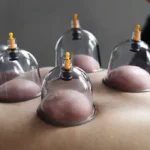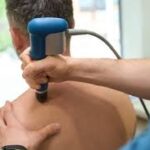Orthopedic injuries, ranging from sprains and strains to more severe conditions like tendonitis and joint degeneration, can significantly impact one’s quality of life.
Traditional treatments often focus on managing symptoms or, in severe cases, surgical interventions. However, a transformative approach to healing is emerging through regenerative medicine.
Let’s dive into the realm of regenerative medicine treatments for orthopedic injuries, exploring how these innovative therapies harness the body’s natural healing mechanisms to promote recovery from within.
UNDERSTANDING REGENERATIVE MEDICINE
Regenerative medicine is a groundbreaking field that leverages the body’s innate ability to repair and regenerate damaged tissues. Unlike conventional treatments that focus on symptom management, regenerative medicine aims to address the root cause of orthopedic injuries, promoting healing at a cellular level.
This field encompasses various approaches, including cell therapy, platelet-rich plasma (PRP) injections, and growth factor treatments.
KEY REGENERATIVE MEDICINE TREATMENTS FOR ORTHOPEDIC INJURIES
Cell Therapy:
Cells are remarkable cells with the unique ability to differentiate into various cell types. In orthopedic regenerative medicine, Mesenchymal Stem Cells (MSCs) are often used. The MSCs are meticulously isolated in an FDA-regulated laboratory following strict ethical and safety guidelines.
These cells are then injected into the site of injury, where they work to promote tissue repair and regeneration.
- How it works: Cells have the potential to transform into specific cell types, such as muscle, tendon, or cartilage cells. When introduced into the injured area, they can differentiate into the necessary cell types to facilitate healing.
- Applications: Cell therapy is employed in the treatment of conditions such as osteoarthritis, tendonitis, and ligament injuries. It holds promise for cartilage regeneration, making it a potential alternative to joint replacement surgery.
Platelet-Rich Plasma (PRP) Injections:
PRP therapy involves isolating and concentrating platelets from the patient’s own blood. Platelets contain growth factors and other bioactive proteins that play a crucial role in tissue repair and regeneration. The concentrated PRP is then injected into the injured area.
- How it works: Platelets release growth factors that stimulate cell proliferation, tissue repair, and angiogenesis (formation of new blood vessels). PRP essentially amplifies the body’s natural healing processes.
- Applications: PRP is commonly used for conditions like tendonitis, ligament injuries, and osteoarthritis. It has shown promise in promoting healing in soft tissues, such as tendons and muscles.
Growth Factor Treatments:
Growth factors are naturally occurring proteins that regulate cell growth, differentiation, and healing. In regenerative medicine, growth factor treatments involve delivering concentrated growth factors directly to the injured area.
- How it works: Growth factors promote the recruitment of cells to the site of injury, stimulate cell division, and enhance the production of extracellular matrix components. This accelerates the healing process.
- Applications: Growth factor treatments are used for a range of orthopedic injuries, including fractures, non-healing wounds, and conditions where tissue regeneration is essential.
BENEFITS OF REGENERATIVE MEDICINE FOR ORTHOPEDIC INJURIES
Natural Healing: Regenerative medicine harnesses the body’s natural healing mechanisms, promoting intrinsic repair processes. This natural approach may result in more sustainable and enduring outcomes compared to traditional treatments.
Reduced Need for Surgery: In some cases, regenerative medicine treatments offer viable alternatives to surgery. This can be particularly beneficial for individuals seeking non-invasive options or those with conditions that may not be suitable for surgical interventions.
Faster Recovery: Regenerative treatments often expedite the healing process by enhancing the body’s ability to repair damaged tissues. This can lead to quicker recovery times and a faster return to normal activities.
Pain Relief: Many orthopedic injuries are associated with pain and inflammation. Regenerative medicine treatments, by addressing the underlying cause of the injury, can provide effective pain relief and improve overall joint function.
Tissue Regeneration: One of the most promising aspects of regenerative medicine is its potential for tissue regeneration. Whether it’s the restoration of cartilage in joints or the repair of damaged tendons, regenerative therapies aim to restore tissues to their optimal state.
CHALLENGES AND CONSIDERATIONS
Regulatory Considerations: The regulatory landscape for regenerative medicine is evolving. Ensuring that treatments adhere to established safety and ethical standards is crucial for the responsible advancement of the field.
Individualized Approach: Regenerative medicine treatments are often most effective when tailored to the specific needs of each patient. The success of these therapies can depend on factors such as the type and extent of the injury, the patient’s overall health, and other individual considerations.
Regenerative medicine represents a transformative frontier in orthopedic care, offering innovative treatments that go beyond symptom management. By harnessing the body’s innate ability to heal and regenerate, these therapies provide a new paradigm for addressing orthopedic injuries.
While the field continues to evolve, the potential for natural healing, reduced reliance on surgery, and faster recovery make regenerative medicine a promising avenue for individuals seeking effective and holistic solutions to orthopedic challenges.
If you are considering regenerative medicine, call Joint & Spine Rehabilitation today at (201) 445-1079 to schedule a consultation.





